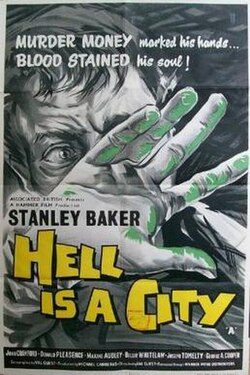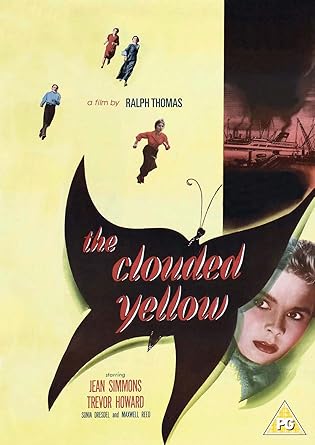
Film Noir Flashback/The Scarlet Hour
January 18, 2025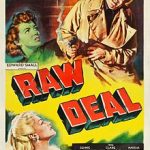
Film Noir Flashback/Raw Deal
January 31, 2025I post reviews (Film Noir Flashback) of movies from, and inspired by, Hollywood’s Golden Age of Noir, the 1940s and 1950s. I am a film noir enthusiast. Maybe, like me, you are looking to enjoy films that are different, or of a different era. Films you may not have seen, ones encompassing cynical detectives, seductive femme fatales, flawed sidekicks all tossed together into intricate plots. Not forgetting the snappy dialogue too.
Backstory: Film Noir has its roots in German expressionist cinematography and American crime fiction. During the 1930s Hollywood became a perfect storm of film artists fleeing the threat of Nazi Germany, emigrating to America, and specifically to the Film studios of Hollywood. This included great directors such as Fritz Lang, Jaques Tourneur, Michael Curtiz and Robert Siodmak.
This new dramatic visual style combined with American hardboiled crime stories (noir fiction), emerged during the Great Depression and produced many classic noirs. Some of these writers include: Raymond Chandler, James M. Cain, Dashiell Hammett, Patricia Highsmith, Jim Thompson and Mickey Spillane.
I hope to showcase some of these memorable noir movies here for you. And advance apologies for a mixture of British and US English occasionally. I have applied the link below, to the Amazon.com DVD of today’s featured film. (As an Amazon Associate, I earn from qualifying purchases).
Inspired by hardboiled detective stories and film noir, I have written the Sterling Private Investigator Series, set in present-day London. I have also posted a link to my books at the bottom of the page. For more Film Noir Flashback movie reviews: https://johnkempauthor.com/blog-film-noir-reviews/
Today’s Film Noir Flashback is:
Act of Violence
#AD USA link DVD: https://amzn.to/3E3yRsN Blu-ray DVD: https://amzn.to/4h277mY
#AD UK link DVD: https://amzn.to/40KW3DZ
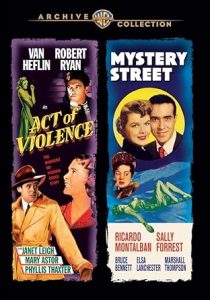
“Guys like him don’t tell people where they live!”
Film Studio: Metro-Goldwyn-Mayer 1949/B&W
Director: Fred Zinnemann
Original Music: Brinislau Kaper
Cinematography: Robert Surtees
Film Editor: Conrad A. Nervig
Story: Collier Young
Screenplay: Robert L. Richards
Produced by: William H. Wright
Main Actors: Janet Leigh, Van Heflin, Robert Ryan
Run time: 82 minutes
Preview
Courtesy of Wikipedia:
Act of Violence, a film noir, was directed by Fred Zinnemann in 1949. It was one of the first films to address veterans issues after World War 11. The film was adapted from an unpublished story by Collier Young before he embarked on a career as an independent producer with his future wife, Ida Lupino. The film was intended to be a low-budget independent film, with Howard Duff attached to star. Mark Hellinger acquired the script, with the intention to pair Gregory peck with Humphrey Bogart in the leading roles.
Hellinger died in 1947, and it was then sold to MGM. Robert Ryan was lent to MGM by RKO Pictures for the production. Act of Violence was the third film made by Ryan in 1948, following Berlin Express and Return of the Badmen. Principal photography took place from May 17 to mid-July 1948, with added scenes shot in late August 1948. Location shooting included scenes at Big Bear Lake and the San Bernardino National Forest, California, accompanied by filming at the MGM Studios in Culver City. Some of the night-time city scenes were shot in impoverished neighbourhoods of Los Angeles.
Synopsis
Act of Violence begins with a panoramic shot of the grey and murky skyline. As the camera dips below the city skyscrapers, it follows disabled war veteran -Joe Parkson – (played by Robert Ryan), shuffling with a limp and heading upstairs to his apartment. There, he packs a small travel bag and pulls a revolver from a drawer and then boards an overnight bus to Los Angeles. Arriving in Santa Lisa, he disembarks and crosses the street as a WW11 memorial parade takes place. He checks into a hotel and immediately looks up a name in the phone book; circling the name and address: Frank Enley of 434 Palmetto Dr. His former best friend, army comrade, and now his nemesis (we later learn). What could have happened?
The action switches to “Captain” Frank Enley (played by Van Heflin), “a good man” who is at the grand opening of a housing project and is being recognized by the town for his work. Watched on by his proud wife, Edith Enley (played by Janet Leigh), and their young son. Now a civilian contractor, Frank has been instrumental in the new homes built. Though, he carries with him a disturbing secret. More about that later.
After this recognition, Frank packs for an overnight fishing trip with a friend and neighbour, Fred (played by Harry Antrim). As soon as the men have left, Parkson calls his home. His wife, Edith, answers the phone but the caller hangs up. Later, Parkson goes to their property, raincoat over his arm (and his gun under that raincoat) and asks for Frank. There are no civilities or niceties from him. We realise he’s on a killing mission… Edith innocently tells him he’s fishing at Redwood Lake. Ominously, Parkson drives over to the lake, as if some sort of unhinged post-war terminator. Time to throw those fish back…
Once there, Parkson takes out a boat and rows out to intercept his ex-buddy. By luck, Frank returns to the dock unaware of his stalker. While drinking a beer, the boatman asks, “Did that fellow find you?” Frank queries this. “A young fellow,” the boatman explains, “walked with sort of a limp…” Frank is immediately edgy, and upon seeing the rowing boat approaching, he heads home and is soon closing blinds and cowering in the darkness. His wife is confused as she squints out to the darkened figure of Parkson staking out their home. “It’s somebody I don’t want to see,” her husband tells her. Naturally enough, that brings cold comfort, if no comfort at all.
During their exchanges, we learn the couple made a sudden move from Syracuse leaving their friends and travelling, “three thousand miles across the country,” his wife says despairingly. She has never asked him about the war but does now… Relenting, he shows her a photo of a bombardier: Joe Parkson who was in the prison camp with him. “I remember him from your letters,” she says, “he was your friend!” Hmm… Not so much now.
“He’s sick, he doesn’t know what he’s doing,” he answers. And for the time-being we don’t know any more than she does.
When later, Frank flees to a trade convention at a hotel in Los Angeles, Parkson and Edith have a confrontation. Parkson tells her that Frank was a stoolpigeon for the Nazis and that he was responsible for his own men’s deaths. Specifically, informing the Commandant of the German POW Camp about the men’s escape plan, and taking the commander’s word that the guards would “go easy” on his men. The guards kill the prisoners in cold blood, however.
It’s not fully clear if the betrayal was a survival tactic (to enable Frank Enley to live), or if he genuinely believed the commandant would show leniency to the escape plan and would-be escapees. Why he is against his men escaping is an open question. What we do know, is that Parkson survived by playing dead and making a promise of revenge for his Captain’s disloyalty and exacting justice for the dead men.
Meanwhile, Edith follows her husband to that hotel to warn him. He tells her the bitter truth. “There were six widows and there were ten men dead. And I couldn’t even stop eating.” Joe Parkson’s girlfriend enters the picture, pleading with her partner to stop. Failing, she seeks out Edith to urgently warn her that Parkson knows of her husband’s whereabouts…
The film plays out against this backdrop; one man trying to erase the actions of his past while fleeing his present tormentor. The other man obsessively hunting him and wanting to kill him for those actions. And as we all know, these things never end well.
Things to like
The Scene: when Frank confesses to his wife. At the hotel, on a back stairwell, he unburdens his guilt and the truth regarding his actions in a German POW camp. A persuasively drawn scene whereby Edith is forced to face her husband’s imperfection. She has looked up to him as a war hero and as a decent and honest man. His ignoble revelation shatters the illusion, though she still believes in his goodness. Regardless, he is a broken man and in a tight corner, he heads off into the night without her.
The scene: whereby Frank takes refuge in a subway and we hear a haunting audio commentary (flashback to the wartime), of his army buddy, Joe, telling him that the tunnel is through and “We make the break tonight.” Frank tells him not to do it, “Look, what happened to the others,” he warns him. The commandant says he has nothing to be ashamed of, “They (the prisoners) will be treated with all possible leniency.” The clip finishes with the resonating sound of the guards’ voices and Frank screaming out in turmoil.
The scene: when the desperate protagonist is fleeing in downtown Los Angeles. Leaving the hotel, he runs into the night, and into the moody noir lighting serenaded by a suspenseful musical score. Breathlessly checking for his tormentor over his shoulder, he negotiates narrow steps that fall away like waterfalls. He runs under a bridge as two narrow gauge funicular trams run up and down on Bunker Hill. See landmark: https://en.wikipedia.org/wiki/Angels_Flight
Finally, he finds a reprieve in a bar in a desolate and seedy part of town. (Think, the alternate Bedford Falls and the “never having existed” George Bailey in IAWL). Frank meets Pat (wonderfully played by Mary Astor), who is likely a prostitute, and definitely a barfly, who befriends him. We enter a seedy underworld of gamblers, conmen, and illegal activities. The sort of place someone might go in attempts to fix the unfixable… Appearing to help him, (egged on by his admission of having money, no doubt), she sets him up with a killer, Johnny (played by Berry Kroeger).
Quotes
Frank: [desperately looking for Johnny] “Where do I find him? Where does he live?”
Pat: “I don’t know. Nobody knows!”
Frank: “Well, there must be some way I can find…”
Pat: “Guys like him don’t tell people where they live!”
***
Frank (to his wife): “You don’t know what made him the way he is. I do.”
***
Edith Crying
Parkson (as he is leaving): “Save it, he isn’t worth it.”
***
Frank (to his wife): “Do I have to draw you a picture? I was an informer.”
***
Pat: “He’s got a business worth twenty thousand. Thats what he said, honest.”
Gavery: “Bring him over.”
Must-see scene
*** Spoiler Alert ***
The finale plays out like a scene from High Noon. On a dirty night, one by one, the three men converge at Santa Lisa train station. Clouds of billowing smoke and steam envelop the leaden atmosphere as a roaring train passes the platform. Joe Parkson, the ex-army buddy, (and Frank’s dogged stalker), appears, shuffling across the gravel tracks with retribution on his mind.
Also, emerging from the gloom, is the former Army Captain, Frank Enley, who has drunkenly (and regretfully), hired a hitman; he’s here to warn Parkson of the impending danger. Finally, Johnny, the mercenary hitman himself, pulls up in a car near the platform, almost at mid-point between the two men… And we watch and wonder to see who will make the first move…
Summary
Act of Violence spotlights soldiers returning from war; noir style, with its wonderful shooting locations and dark themes… A Hollywood script of veterans returning from war to lead a happy existence is thrown into the dumpster here. Questions about self-survival and guilt are examined and played out by two great lead characters in Van Heflin and Ryan. The film is both absorbing and intelligent, the action well-paced with a western styled finale as a bonus.
This is a dark vision of post war life that provides no easy answers to its morality questions. Nonetheless, it all adds up to a rewarding watch and an exalted film noir, and ironically, there’s not a private detective or a femme fatale in sight.
For more Film Noir Flashback movie reviews: https://johnkempauthor.com/blog-film-noir-reviews/
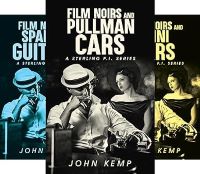
#AD USA Link: Film Noirs & Doused Cigars (paperback): https://amzn.to/4hhsNv6 (eBook): https://amzn.to/4hifMRM
#AD UK Link: Film Noirs & Doused Cigars (paperback): https://amzn.to/4gU3hMv (eBook): https://amzn.to/3DY9p84


